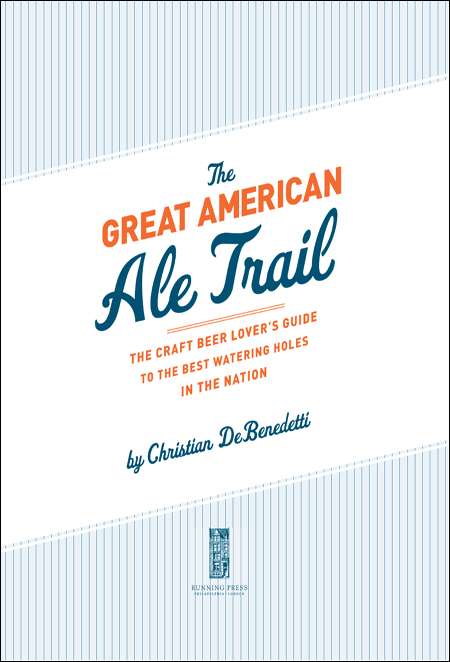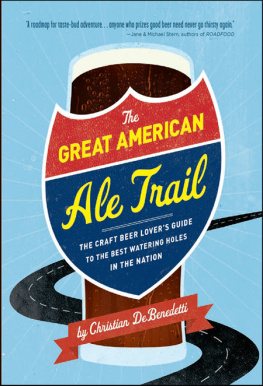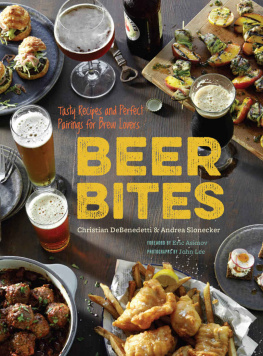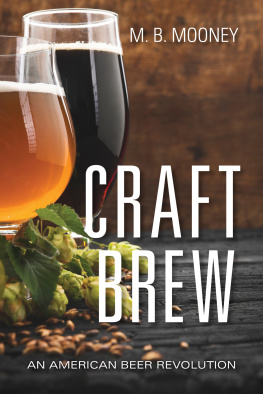
2011 by Christian DeBenedetti
Published by Running Press,
A Member of the Perseus Books Group
All rights reserved under the Pan-American and International Copyright Conventions.
This book may not be reproduced in whole or in part, in any form or by any means, electronic or mechanical, including photocopying, recording, or by any information storage and retrieval system now known or hereafter invented, without written permission from the publisher.
Books published by Running Press are available at special discounts for bulk purchases in the United States by corporations, institutions, and other organizations. For more information, please contact the Special Markets Department at the Perseus Books Group, 2300 Chestnut Street, Suite 200, Philadelphia, PA 19103, or call (800) 810-4145, ext. 5000, or e-mail .
ISBN 978-0-7624-4375-8
Library of Congress Control Number: 2011931109
E-book ISBN 978-0-7624-4476-2
9 8 7 6 5 4 3 2 1
Digit on the right indicates the number of this printing
Cover design by Ryan Hayes
Interior design and illustration by Ryan Hayes
Edited by Jennifer Kasius
Typography: Garage Gothic, Fenway Park Gotham, and Chronicle
Running Press Book Publishers
2300 Chestnut Street
Philadelphia, PA 19103-4371
Visit us on the web!
www.runningpress.com
For Mom and Chuckthe Traveling Companions, and Dad.
Contents

WHEN THE BOARDING PASS EMERGED FROM THE WHIRRING MACHINE AT Helsinki-Vantaa Airport, I had to admit that I was relieved. I hadnt intended things to turn out this way, but this is what always happens, and I really should have known better. Only seven hours previously, Id been at the pubSt. Urhos Pub, to be precisea slightly grubby watering hole in one of lesser-known districts of Helsinki, Finland. Finns speak a language intelligible to no one else on Earth, but that has never slowed them down, especially when it comes to socializing. So now here I was, with Markku, Jussi, Kari, and a few others, telling improbable stories. I pinged my pal Matt on Facebook and told him I was drinking his beer in Helsinki. He picked up in England and pinged me back within minutes, asking how it was holding up. The beer was beautiful, and it was a fine eveningall about the ebullient company, and the company was all about the beer. St. Urhos has more than a dozen taps, all flowing with excellent beers, lovingly kept. I didnt mean to stay until 3:00 A.M., but thats what you do, and the reindeer pizza really was excellent.
Ive been lucky enough to experience many evenings like this over the years. I started in the early 1980s in London, where I first fell in love with cask-conditioned British ale. I continued across Europe, racking up epic evenings in Germany, Belgium, and the Czech Republic. In those days, there was one country where great beer was not to be found, and that was the United States. I got back home from a year abroad in 1984 and found that we Americans had nothing to drink. Somehow the United Statesonce home to 4,000 breweries and the most exciting and varied beer culture in the worldhad lost its way among the great brewing nations. Our breweries fell prey to a form of progress that involved removing all the flavor from one of the worlds diverse and fascinating drinks. Like many future craft brewers, I started making my own beer at homenot because I wanted to make beer, but because I wanted to drink beer. Slowly but inevitably, beer took over my life, the slope became slippery, and I slid into the mash tun. I bobbed to the surface and never looked back.
Today, out of nothing, we have built everything. The United States is now the undisputed beer capital of the world, home to the most vibrant beer culture anywhere. It is difficult to overstate how unlikely this seemed twenty years ago. A newly minted craft brewer, I traveled to Europe frequently, and when I told people that I was an American brewer, the scorn was palpable. Yes, weve heard of your American beer, they sneered. I protested that Americans were making very flavorful beers now, but heads shook with disbelief. Slowly, however, over the late 1990s and into the 2000s, it dawned on the rest of the world that Americans had woken up to beer, and once awake wed gotten mighty busy.
While some built breweries, others built restaurants, bars, bowling alleys, and movie theaters around great beer. Not only did we have our own beerwe had everyone elses beer too. The complex beers of Belgium, the fruity ales of England, the malty, bracing lagers of Bavaria, all began to flow from Americas taps. Great restaurants, once content with lengthy fine wine lists and dismissive gas-station beer lists, started to realize that industrial beer was an insult to their food and to their beer-savvy patrons. Today I can find the best beers of Belgium faster in a twenty-minute walk from my front door in Brooklyn than I could walking from Grande Place in Brussels.
Do you know beer places and beer people? You should, because beer brings on a sort of fellowship that wine rarely inspires. When you get off a plane and head into an American town, do you know where to find the best of everything, places where people speak your language? Frankly, despite having been all over the world, I cant say that I do. But thats okay, because we have Christian DeBenedetti to show the way. Ive read many beer books, of course, but none that capture the spirit, the philosophy, the people, and the feeling of the American beer scene the way that The Great American Ale Trail does. This book will tell you what you really want to knowwhere to go, why you want to go there, how the place came to be, what kind of food they serve, what types of beers you can enjoy with it, and whos going to be sitting next to you at the bar. At the same time, youll read the stories of men and women who turned their backs on lucrative careers, mortgaged their houses, and put everything on the line to follow their passions and build the kinds of places where theyd want to spend their time. Occasionally, just occasionally, until 3:00 am. So read this book, follow Christians well-laid path, and build your own ale trail. Youll have your own epic evenings with good people and the worlds most exciting beverage. And if you should miss your plane, dont worry. Another one will leave soon, and in the meantime, there is some awfully nice beer at the airport bar.
Garrett Oliver
Garrett Oliver is the brewmaster of The Brooklyn Brewery and the author of the award-winning book, The Brewmasters Table. He is also editor-in-chief of The Oxford Companion to Beer (2011), and has hosted more than seven hundred beer events in ten countries.

THE MOUNTAINS AHEAD ARE BRUSHED WITH CALIFORNIA CHAPARRAL and pion juniper, bathed in low angle sunlight, but Im pulling over in the quiet little town of Alpine, Californiaa forty-minute drive into the Coast Range foothills outside of San Diego-to visit Alpine Brewing Company. Now the sweet, earthy smells of steeping grains and the tang of hops envelop me. There Pat McIlhenney, a former full-time fire captain with a handlebar mustache, is leading a tour of his handmade brewhouse built in an old TV-repair shop. His operation has been racking up accolades in global competitions. I cannot make beer fast enough, he says, handing out samples.
Those beers are among the finest Ive tasted anywhere: his balanced but tangy Duet is full of the fresh, citrusy flavors of Simcoe and Amarillo hops and a grainy, toasty backbone. Even without a bar or taproom, a stream of visitorsbeer pilgrimscomes in to meet McIlhenney and buy fresh-brewed beers to go. Its a scene I find again and again across the United States, in cozy beer bars and small-batch breweries, even anodyne cul-de-sacs. I have to wonder: Where are they going next?
Next page









